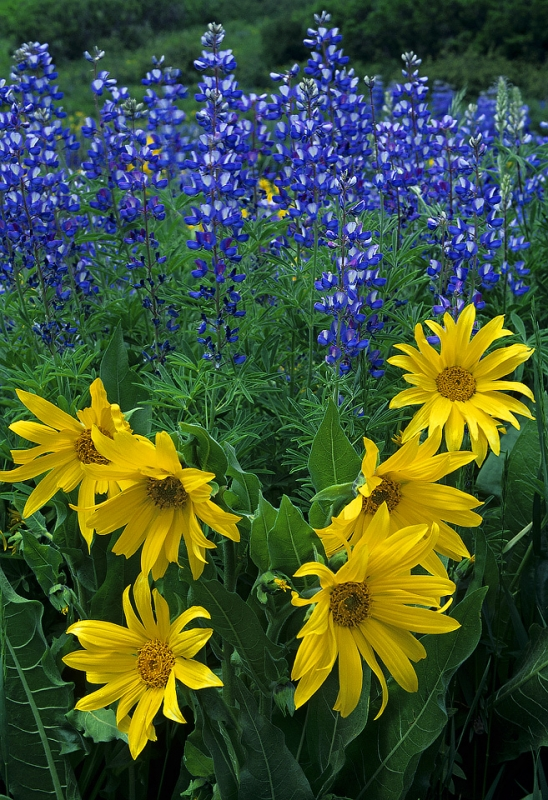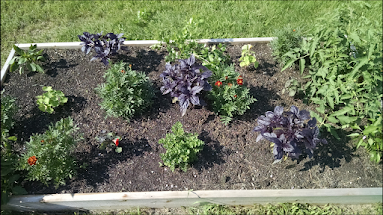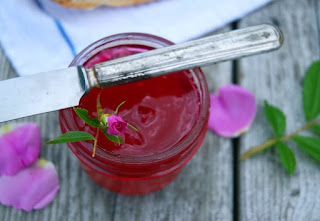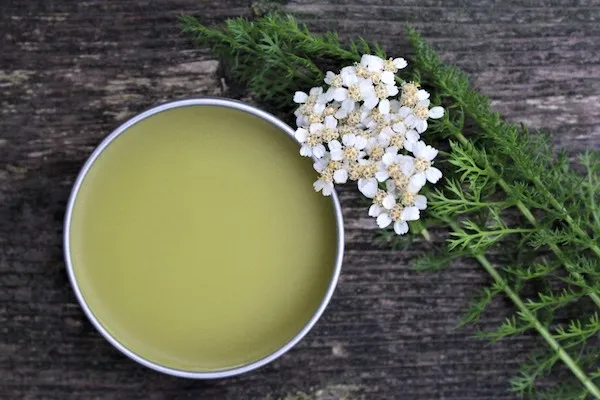
August always feels like the “final push” of the growing season after a busy spring and hot summer of work. I find myself spending most of my free time in the garden, problem solving and making sure my plants are healthy and ready for the upcoming fall harvest. But no matter how hard I’m working in the garden come August, I always get a little spark of joy when I pass by my flowers.
I grow a variety of flowers in my garden every year and enjoy the cheerful aesthetic and beautiful scents that they bring to my garden space, whether they are planted in a large flower bed or sprinkled throughout my vegetable garden. It’s encouraging to grow flowers, since they’re so beautiful and typically are easier to grow than most veggies. But flowers are also more useful than they appear at first glance: they’re my little helpers in the garden that attract pollinators, ward off pests, encourage healthy soil, and add a beautiful aesthetic and scent to my home when I cut them for bouquets. Most interesting of all, many common garden plants are edible, and some even have incredible medicinal properties. This month, I want to spend some time appreciating the many benefits that flowers have to offer, both in our gardens and on our plates.
Companion Planting with Flowers
Typically when we talk about companion planting, we focus on which vegetables grow well alongside one another and which ones do not. But flowers deserve just as much attention in these conversations as the vegetables, because they often help determine the health and harvest of our crops. Being that most flowers are very aromatic, they can not only attract pollinators, which enable crops to fruit; they also attract predators like parasitic wasps, which target pests like aphids, hornworms, and more. A flower’s strong scent also discourages certain garden pests from exploring your garden in the first place: for example, marigolds can help repel slugs, cucumber beetles, and other common garden pests from a variety of crops like tomatoes, squash, and peppers. Nasturtium is a pretty little flower that can act as a trap crop when planted near squash, luring aphids towards the nasturtium and away from your squash plants. Some other flowers that are beautiful in the garden while also attracting pollinators and pest predators alike include lupine, sunflowers, zinnias, and cosmos. They can help keep your garden healthy while also adding texture and color!

Improving Soil Health
Flowers also do incredible work beneath the soil. They can help establish healthy soil and keep it healthy, saving gardeners a ton of work and stress. It’s important to establish healthy gardening soil in a new plot of land before planting it, and flowers can help tremendously in this task. Flowers with long taproots can be planted in the soil to break through and aerate the soil, and to draw up nutrients as well. Sunflowers are wonderful for this purpose because they are fast and easy to grow, they can withstand heavy wind or storms when planted close together, and they attract pollinators and birds alike. Nitrogen-fixing flowers are great for establishing healthy gardening soil as well, such as clover, lupine, and false indigo.

Once healthy gardening soil is established, it’s important to protect it! By allowing flowers to hold the space of otherwise empty sections of the garden, you can help prevent soil erosion and loss that occurs with heavy rain or wind. If you’ve been composting (like I discussed in July), you know that healthy soil is the foundation to a healthy garden! I like to use small flowers for this purpose, like tiny French marigolds. They won’t grow humongous and take over the vegetable bed, but they will attract pollinators, repel pests, and help hold garden soil in place from spring to fall. Plus, French marigolds can be tilled or worked into the soil at the end of harvest season, where they can release valuable nutrients back into your garden bed.

Edible Flowers
Admire your beautiful flowers all you want, but remember to munch on them every once in a while, too! Many common garden flowers are edible and medicinal. For example, floral jellies can be made from the petals of flowers like roses, peonies, marigold, and even sunflowers! Most floral jellies have a light, sweet, floral taste, with hints of other flavors like honey, lemon, berry, cucumber, and more depending on the flower used. The jellies are made by first brewing a floral tea with the leaves and/or petals of the edible flower you want to use. This tea is then cooked with sugar, pectin, and lemon juice, and can be canned for long-term storage or enjoyed fresh.

While I work in my garden, I like to munch on fresh leaves and flowers of borage, nasturtium, and other flowers. Borage has pretty star-shaped flowers and large leaves that have a slightly sweet and lightly cucumber taste to them. I like to use the flowers as garnishes in salads or on baked goods. Nasturtium, on the other hand, has an intensely peppery flavor. I love using sautéed nasturtium greens in scrambled eggs and other savory dishes. Enjoying the diverse flavors of the flowers in the garden allows me to appreciate my plants in a whole new way--plus, they’re healthy, too!
Some flowers can even be candied--I know lots of folks like to crystalize flowers like pansies and rose petals as a special summertime treat, or to decorate baked goods. Flowers are crystallized by brushing them gently with egg white and dusting with a superfine sugar.
And of course, many flowers can be dried and enjoyed in teas, such as coneflower (echinacea), lavender, chamomile, calendula, red clover, and more. Flowers can be dried for use in tea by hanging the flowers upside down for a few weeks, using an herb dryer, or by spreading the flowers/herbs on a screen for a few weeks. Whenever the plant material is easy to crumble in your fingers, it is ready to be moved into a jar or other container to store for use in teas. Remember when consuming a new plant of any kind to be absolutely sure that you’ve identified it correctly, that you double check that it is safe to eat, and to introduce yourself to new foods slowly.
Medicinal Flowers
It’s important to also appreciate the wonderful medicinal abilities that some of our garden flowers provide. For example, medicinal salves can be made with flowers like yarrow and dandelion. A salve is a medicinal paste that is made from oils, herbs, and beeswax; and depending on the plant used in the salve, it may offer a variety of different benefits. Yarrow salve can be used to treat topical injuries like burns, cuts, scrapes, and rashes. Even if you decide not to make a yarrow salve, plant this flower in the garden anyway to enjoy its mosquito-repelling properties!

Dandelion may be a pesky weed in your garden bed, but consider keeping it for use as an edible salad green and a main ingredient in a healing salve. Dandelion salves are known for their pain-relieving and anti-inflammatory properties, so they work wonderfully on tired or achy muscles and joints. To make a salve, a carrier oil is infused with dried plant material, which is then melted with beeswax and poured to make a paste. With salves, the possibilities are nearly endless! There are so many incredible medicinal plants out there to enjoy, and some of them are likely in your garden already. Always research a plant thoroughly before using it medicinally, as some plants may not be fit for use by everyone.
I’m a strong believer in designing a garden that engages all of the senses--colorful and flashy plants, aromatic herbs, wind chimes, and snackable veggies to enjoy while getting my hands dirty in the garden. Including flowers in this mix is so worthwhile, for their beauty and fragrance as well as the many advantages they provide for our health and our gardens. We’ve barely scratched the surface of how wonderful flowers are in the garden and for our health, so if you’re feeling inspired by your flowers, some great resources to check out include:
- The Herbal Apothecary by J.J. Pursell
- Grow Your Own Tea by Christine Parks
- Vegetables Love Flowers by Lisa Mason Ziegler
- The Healing Garden by Deb Soule
I hope you can enjoy your flowers with new eyes for the rest of the summer, and that you find a little extra joy in appreciating all that your cheerful garden beauties are capable of!